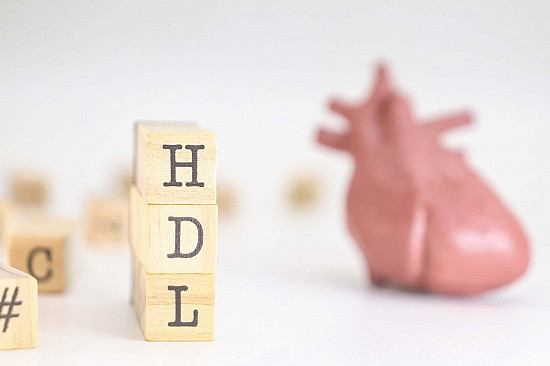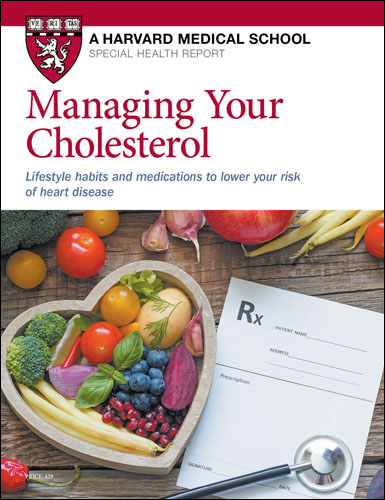Can we reduce plaque buildup in arteries?
The key is lowering LDL and making lifestyle changes.
- Reviewed by Howard E. LeWine, MD, Chief Medical Editor, Harvard Health Publishing; Editorial Advisory Board Member, Harvard Health Publishing
Cholesterol is a fatty substance that occurs naturally in the body, High blood levels of cholesterol encourage the formation and growth of vascular plaques that put you at risk for heart attack and stroke.
What causes arterial plaque?
Plaque forms when cholesterol lodges in the wall of the artery. To fight back, the body sends white blood cells to trap the cholesterol, which then turn into foamy cells that ooze more fat and cause more inflammation. That triggers muscle cells in the artery wall to multiply and form a cap over the area. But the soft plaque beneath the cap is dangerous.
For example, if your blood pressure spikes, it puts pressure on the thin wall of the plaque, which can break open, form a clot, and cause a heart attack. Most major heart attacks occur when plaques rupture.
Plaques that gradually enlarge over time are often covered by thick, fibrous caps that can resist breaking apart. They can still block blood flow, causing angina (chest pain brought on by exertion or emotional stress). These blockages can also lead to different type of heart attack.
Can you unclog your arteries, or reduce plaque buildup?
Making plaque disappear is not possible, but with lifestyle changes and medication they can shrink and stabilize.
Doctors especially want to target the softer plaques before they rupture. For example, if you have a 30% blockage in the artery from soft plaque, the goal is to try to suck out the cholesterol from the inside, so the plaque shrivels down to 15% and leaves nothing inside it.
How do you get the cholesterol out of the plaque? By lowering levels of cholesterol in the blood, where it travels inside particles called lipoproteins. Low-density lipoprotein (LDL) deposits cholesterol into blood vessel walls.
The drugs used most often to reduce LDL cholesterol levels are statins — such as atorvastatin (Lipitor) and rosuvastatin (Crestor). Statins block the liver enzyme that promotes cholesterol production. Very intensive lifestyle changes have also been shown to shrink plaque.
Those lifestyle modifications include:
Eating a Mediterranean diet
It can reduce heart disease risk by 30%. It is rich in olive oil, fruits, vegetables, nuts and fish; low in red or processed meats; and moderate in the amounts of cheese and wine you can consume.
Kicking the habit
Smoking damages the lining of the arteries. Quitting can help raise HDL levels.
Exercising
Aerobic exercise can raise HDL, lower blood pressure, burn body fat, and lower blood sugar levels. Exercise combined with weight loss can also lower LDL levels. Aim for at least 150 minutes per week of moderate-intensity exercise.
Busting the cholesterol myth
Why you can't live without this tricky substance.
Cholesterol is often vilified as the bad guy, but we need this waxy, fatty substance to make vitamin D, hormones, bile that aids digestion, and the coverings of our cells. The liver produces 75% of the body's cholesterol, but all cells have the ability to make it.
When cells need more cholesterol, the liver sends it via the bloodstream in packages made of cholesterol on the inside and protein on the outside. These cholesterol-laden particles are known as low-density lipoprotein, or LDL. Too much LDL in the blood can cause cholesterol to lodge in the artery walls and form plaques. That's why LDL is known as "bad" cholesterol.
Whereas LDL particles deposit cholesterol into plaques of atherosclerosis, some high-density lipoprotein (HDL) particles help remove cholesterol from plaques. That's why it's often referred to as "good" cholesterol.
How much HDL and LDL should you aim for?
An HDL of 60 milligrams per deciliter (mg/dL) or greater is associated with a lower risk of heart disease. Your personal goal for LDL depends on your cardiovascular risk profile. For people who have coronary artery disease or other evidence of cardiovascular disease, the goal is an LDL of less than 70 mg/dL and some doctors are now aiming for an LDL of less than 55 mg/dL.
Image: Thinkstock
About the Reviewer

Howard E. LeWine, MD, Chief Medical Editor, Harvard Health Publishing; Editorial Advisory Board Member, Harvard Health Publishing
Disclaimer:
As a service to our readers, Harvard Health Publishing provides access to our library of archived content. Please note the date of last review or update on all articles.
No content on this site, regardless of date, should ever be used as a substitute for direct medical advice from your doctor or other qualified clinician.

















